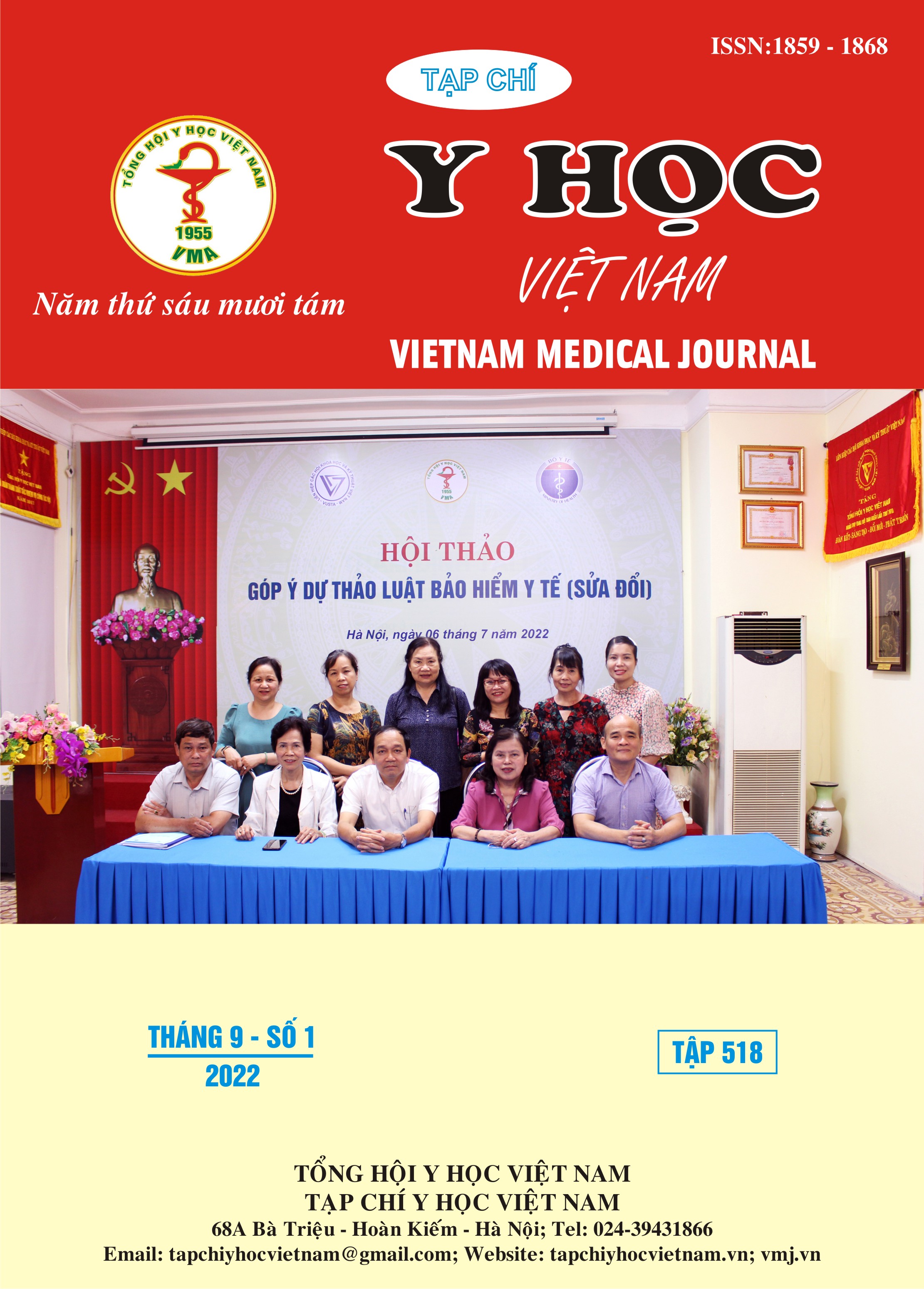CONTENT VALIDITY OF FLACC SCALE IN EVALUATING PAIN SEVERITY OF CHILDREN UNDER 3 YEAR-OLD POSTOPERATIVELY
Main Article Content
Abstract
Introduction: FLACC had been using for evaluating pain severity in children for many years but this scale has not been evaluated the validity and practical level in Vietnamese version. Objectives: To evaluate the content validity and practical level of FLACC when translating to Vietnamese version at National Children’s Hospital, Anesthesiology Department. Methods: The FLACC was translated to 2 Vietnamese versions, these Vietnamese FLACC versions was summarized to 1 completing Vietnamese version and be back-translated to English FLACC version. The completing Vietnamese version and the English back-translation version were evaluated the content validity and the practical level by the specialist Committee to compare the agreement of this back-translation version with the original version. Finally, the completion Vietnamese FLACC version was evaluated the practical level by 30 Doctors and Nurses at Anesthesiology Department, National Children’s Hospital, Vietnam. Results: The Vietnamese FLACC version and the back-translation version have content validity when comparing with the original version. The mean time in which medical staffs spent on using FLACC to evaluate pain level in children under 3 year-old in recovery room postoperatively was 2 minutes. Conclusion: This research results demonstrated that Vietnamese FLACC version has content validity.
Article Details
Keywords
Pain scale, children pain postoperatively, Face-Legs-Activities-Cry-Consolibility Scale
References
2. ANZCA | Essential Pain Management program. Accessed July 31, 2022. https:// www.anzca.edu.au/safety-advocacy/global-health/essential-pain-management
3. Freund D, Bolick BN. CE: Assessing a Child’s Pain. AJN The American Journal of Nursing. 2019;119(5):34-41. doi:10.1097/01.NAJ.0000557888.65961.c6
4. Merkel SI, Voepel-Lewis T, Shayevitz JR, Malviya S. The FLACC: a behavioral scale for scoring postoperative pain in young children. Pediatr Nurs. 1997;23(3):293-297.
5. Manworren RCB, Hynan LS. Clinical validation of FLACC: preverbal patient pain scale. Pediatr Nurs. 2003;29(2):140-146.
6. Voepel-Lewis T, Zanotti J, Dammeyer JA, Merkel S. Reliability and validity of the face, legs, activity, cry, consolability behavioral tool in assessing acute pain in critically ill patients. Am J Crit Care. 2010;19(1):55-61; quiz 62. doi: 10.4037/ ajcc2010624
7. Crellin DJ, Harrison D, Santamaria N, Babl FE. Systematic review of the Face, Legs, Activity, Cry and Consolability scale for assessing pain in infants and children: is it reliable, valid, and feasible for use? Pain. 2015;156 (11):2132-2151. doi:10.1097/j.pain.0000000000000305
8. Lempinen H, Pölkki T, Kyngäs H, Kaakinen P. Feasibility and Clinical Utility of the Finnish Version of the FLACC Pain Scale in PICU. Journal of Pediatric Nursing. 2020;55:211-216. doi:10.1016/ j.pedn.2020.07.011
9. Voepel-Lewis T, Merkel S, Tait AR, Trzcinka A, Malviya S. The reliability and validity of the Face, Legs, Activity, Cry, Consolability observational tool as a measure of pain in children with cognitive impairment. Anesth Analg. 2002;95(5):1224-1229, table of contents. doi:10.1097/00000539-200211000-00020


